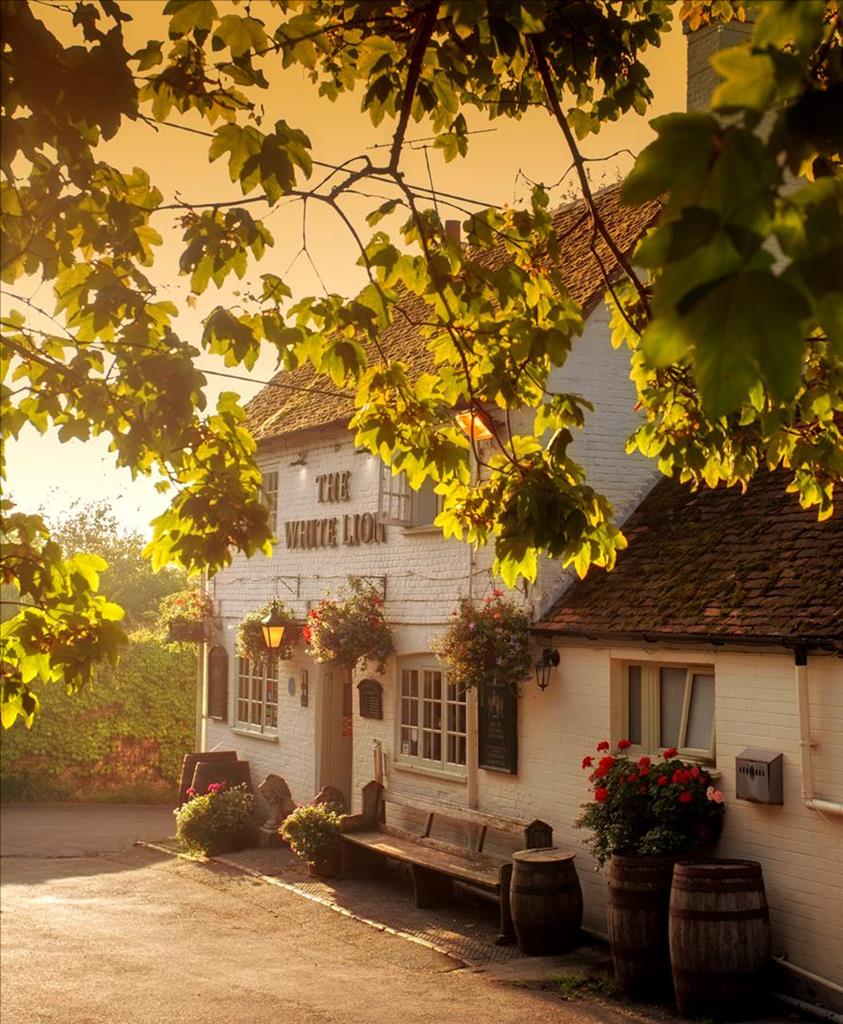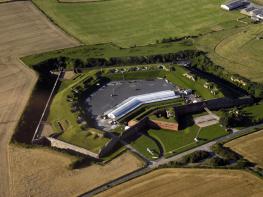The Cart House is a beautiful, spacious barn conversion on the edge of the South Downs National…
Wickham and the Forest of Bere

A rural ramble around the royal hunting ground of the Forest of Bere.
4 miles (6.4kms)
About the walk
With its medieval market square and engaging collection of independent shops, Wickham is one of Hampshire’s most attractive little towns. It was the birthplace of William of Wykeham, founder of both Winchester College and New College, Oxford.
Despite his humble peasant background, William led a charmed life, and by the time he was appointed Bishop of Winchester in 1367 he was a wealthy man. He transformed the interior of his great Norman cathedral and personally endowed the two prestigious colleges that still flourish more than 600 years after his death. William had been educated in Winchester, where he caught the eye of Bishop Edington, who introduced him to Edward III.
In a secular career spanning 20 years, William rose to be Chief Surveyor of the Royal Castles and Warden of Forests and Woods. It was a fitting appointment, for in those days Wickham lay at the heart of the Forest of Bere, a vast woodland stretching from the Sussex border to the River Test. Saxon kings hunted here long before the Norman Conquest, but in 1086 King William formally declared Bere to be a royal hunting forest. However, when Charles I led the last royal hunt in 1628, most of the trees had been felled to provide timber for the naval dockyards along the south coast.
Timber remains an important industry and a large timber yard still flourishes beside the former railway goods yard at Mislingford. The Meon Valley railway arrived late on the Hampshire landscape, a product of territorial skirmishing between the London & South Western Railway and its arch-rival, the Great Western. In an effort to protect its south-coast traffic from the Great Western railheads at Basingstoke and Winchester, the LSWR opened its own route from Alton to Fareham in 1903.
Built to mainline standards with gentle curves and easy gradients, the new line was an expensive white elephant. From the start it generated little revenue, drifting through the interwar years towards its inevitable closure in 1955. Yet the Meon Valley railway has its place in history. Early in June 1944, Sir Winston Churchill and his war cabinet met other Allied leaders in a special train at Droxford Station to complete their plans for the D-Day invasion of Europe. With working trains now a distant memory, much of the old line has a new role as a peaceful bridleway. This walk follows the old line up the valley before plunging into West Walk, a charming mixture of 19th-century oak and modern conifer plantations that forms the largest surviving fragment of the former Royal forest. The area is now a forest nature reserve, with a variety of visitor facilities.
Walk directions
The station car park on the northeast outskirts of Wickham backs directly onto the bridleway. Turn left, heading north and leaving the bridge over the River Meon behind you. Follow the old line as far as the first overbridge; 60yds (55m) beyond the brick arch, take the path that doubles back to the left and climb up to the farm track at the top. Turn left, cross over the bridge and follow the track as it winds past Northfield Farm and Chiphall Lake trout fishery to the A32.
There is no footway here so cross over carefully, turn left, and take great care as you follow the busy main road for 200yds (183m), passing two lodge cottages on the right-hand side. 150yds (137m) further on, turn right past a wooden barrier into West Walk. Follow the grassy track at right angles to the road for the first 75yds (69m), then fork left onto a forest path, stepping over a large fallen tree. Ignore all turnings and keep ahead as the trail dips into a small valley, crosses a brook, and climbs to a five-way junction.
Keep ahead here, downhill, signed towards West Walk and Woodend. Continue along the gravelled path and at the next crossways (signed ‘Woodend’) fork left onto a slightly narrower gravel track. Follow this ahead, dropping down to cross a footbridge. Climb the hill up through Woodend car park, crossing the Soberton Heath road via a small gate. Go through a barrier opposite into Upperford Copse.
Walk straight downhill through the woods, following the ‘Soberton and Newtown Millennium Walk’ sign. At cross tracks at the bottom of the hill continue ahead to reach the former railway line at a bridge.
Join the old line immediately south of the road bridge and head left, passing under another bridge carrying the A32, for 2 miles (3.2km), back to the start.
Additional information
Bridleways and forest tracks - will be muddy after rain
Old railway path, river valley and mature woodland
Run free on the old railway and in West Walk
OS Explorer OL3 Meon Valley, Portsmouth, Gosport & Fareham
Station car park, Wickham
Station Road, Wickham
WALKING IN SAFETY
Read our tips to look after yourself and the environment when following this walk.
Find out more
Also in the area
About the area
Discover Hampshire
Hampshire’s varied landscape of hills and heaths, downlands and forests, valleys and coast is without rival in southern England. Combine these varied landscapes and terrains with secluded and idyllic villages, complete with thatched and timber-framed cottages and Norman churches, elegant Georgian market towns, historic ports and cities, restored canals and ancient abbeys, forts and castles, and you have a county that is paradise for lovers of the great outdoors.
If you’re a walker, stride out across the high, rolling, chalk downland of the north Hampshire ‘highlands’ with far-reaching views, walk through steep, beech-clad ‘hangers’ close to the Sussex border. Or perhaps take a gentler stroll and meander along peaceful paths through unspoilt river valleys, etched by the sparkling trout streams of the Test, Itchen, Avon and Meon. Alternatively, wander across lonely salt marshes and beside fascinating coastal inlets or, perhaps, explore the beautiful medieval forest and heathland of the New Forest, the jewel in Hampshire’s crown.
Nearby stays
Restaurants and Pubs
Nearby experiences
Recommended things to do
Why choose Rated Trips?
Your trusted guide to rated places across the UK
The best coverage
Discover more than 15,000 professionally rated places to stay, eat and visit from across the UK and Ireland.
Quality assured
Choose a place to stay safe in the knowledge that it has been expertly assessed by trained assessors.
Plan your next trip
Search by location or the type of place you're visiting to find your next ideal holiday experience.
Travel inspiration
Read our articles, city guides and recommended things to do for inspiration. We're here to help you explore the UK.













